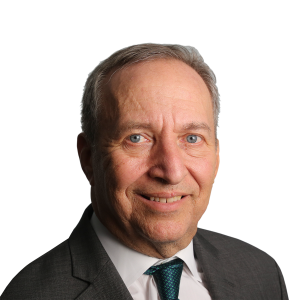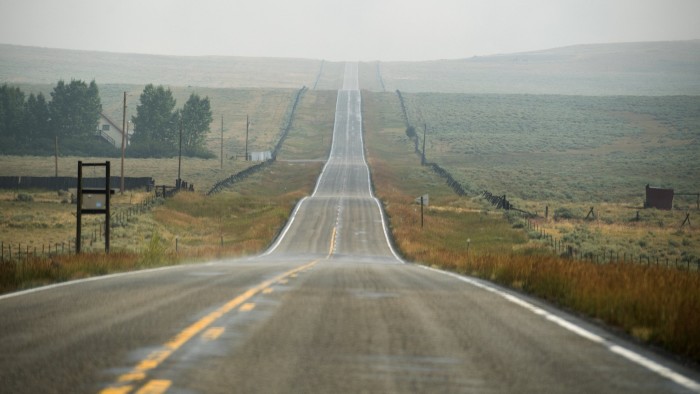I discovered the rest of America on my summer holiday

Roula Khalaf, Editor of the FT, selects her favourite stories in this weekly newsletter.

Economists like me see the world through the prism of models, fitted to statistical data and tested against market realities. Economic models provide uniquely powerful perspectives: I have used them to argue that had the economy been left to itself, and policymakers not heeded the lessons of history and theory, the 2008 financial crisis might have led to another depression.
But there are other ways of gaining understanding about an economy and its workers. This was brought home to me last month when I accompanied my wife on a trip different to any I had ever taken. We drove for two weeks on two-lane roads from Chicago to Portland across the Great Plains and Rocky Mountains. The larger cities we passed through included Dubuque, Iowa, Cody, Wyoming and Bozeman, Montana.
Driving across America, as opposed to looking down from a plane, makes clear how much of this vast country is uninhabited. Again and again, we encountered signs warning us to check our gas because it would be 50 miles to the next gas station. I’m sure there were moments when we were 250 miles from any place where I could have bought an iPhone charger. Often there was no mobile phone service either.
Much of the land we saw was not only uninhabited but also seemed put to little economic use — valleys too arid to farm or even to support ranching; mountain ranges too rugged (vulnerable to snow or falling rock or fire) to support year round economic activity. We drove past some romantic ghost towns but more abandoned cafés, gas stations and hotels.
The abundance of land seemed not just a rural but an urban phenomenon. Every attraction we visited had enough parking spaces for 10 times the number of visitors it enjoyed. We had our choice of metered parking spaces on main streets from Dubuque to Keystone when we stopped for lunch.
We were also struck by how remote the concerns of the coasts seemed. TVs in bars and restaurants were rarely turned to news channels. No one seemed terribly concerned with the controversy over Supreme Court nominee Brett Kavanaugh. We saw 15 roadside signs opposing abortion for every other political sign of any kind.
The conversations we overheard hewed close to local matters. I have always taken it for granted that broadened opportunities for young people are a good thing and that disadvantaged parents would be among the greatest champions of that idea.
Now I see more nuance. When we visited one western university and spoke to some of its recruiters, they told us about the ambivalence of parents in their rural state. Many ranchers and native Americans wanted to see their children educated but feared they would lose their attachment to the family way of life.
The phrase “way of life” is, I have come to think, an idea that those concerned with political economy could usefully ponder. It is fashionable to talk about business leaders and cosmopolitan elites who are more worried about the concerns of their conference mates in Davos than those of their fellow citizens in Detroit or Düsseldorf, Germany. They are blamed for provoking a backlash against globalisation. What I saw on my trip was how profoundly different ways of life are within the US. I began to understand, better than I had, those who live as their parents did in smaller communities closer to the land.
People in most of the places we visited have tended to vote Republican in recent decades. Signs for church suppers, hunting clubs and local fairs outnumbered political signs or even signs for commercial goods, which tells a cultural story. But the economic picture is more complex. Starting with the US government’s 1803 purchase of the Louisiana Territory from France, and the federally funded Lewis and Clark expedition that was the first to cross the American west, the free market had little to do with the settling and the economic progress of the American west. The economy of many of the places we visited was the creation of the US government. Depression-era programmes paid for power plants, built hiking trails, and helped cut roads through mountains. Western tourist economies are based around national parks, forests and monuments, and government land grants funded many of the universities.
The US is a remarkable place because it is an amalgam of remarkable places. Americans want to live in very different ways. Perhaps more appreciation of that on the part of those who lead our society could strengthen and unify our country at what is surely a complex and difficult moment in its history.
The writer is Charles W Eliot university professor at Harvard and a former US Treasury secretary
Letters in response to this article:
Academic interests can combine with rural life / From Albion M Urdank, Los Angeles, CA, US
It’s time for the FT to discover the rest of the world / From Ahmed Olayinka Sule, New Malden, Surrey, UK
The shock of that Texan’s comment 50 years ago is still with me today / From Philip Warland, London, UK
Rural folks, remember — awareness works two ways / From Daniel Mauro, Chicago, IL, US
Summers has described a worldwide phenomenon / From Birger Fredriksen, Arlington, VA, US
Summers’ epiphany is timely and instructive / From Prof Kevin Morgan, Cardiff University, UK
Community spirit goes back a long, long way / From Brad Walmsley, Geneva, Switzerland
Summers appreciates his limitations — at last / From Jonathan Reiss, New York, NY, US
Harvard owes much to ‘flyover state’ donors / From T R Murphy, Bethesda, MD, US
Who knew the elite were quite so disconnected? / From David Beffert, Portland, OR, US
Comments